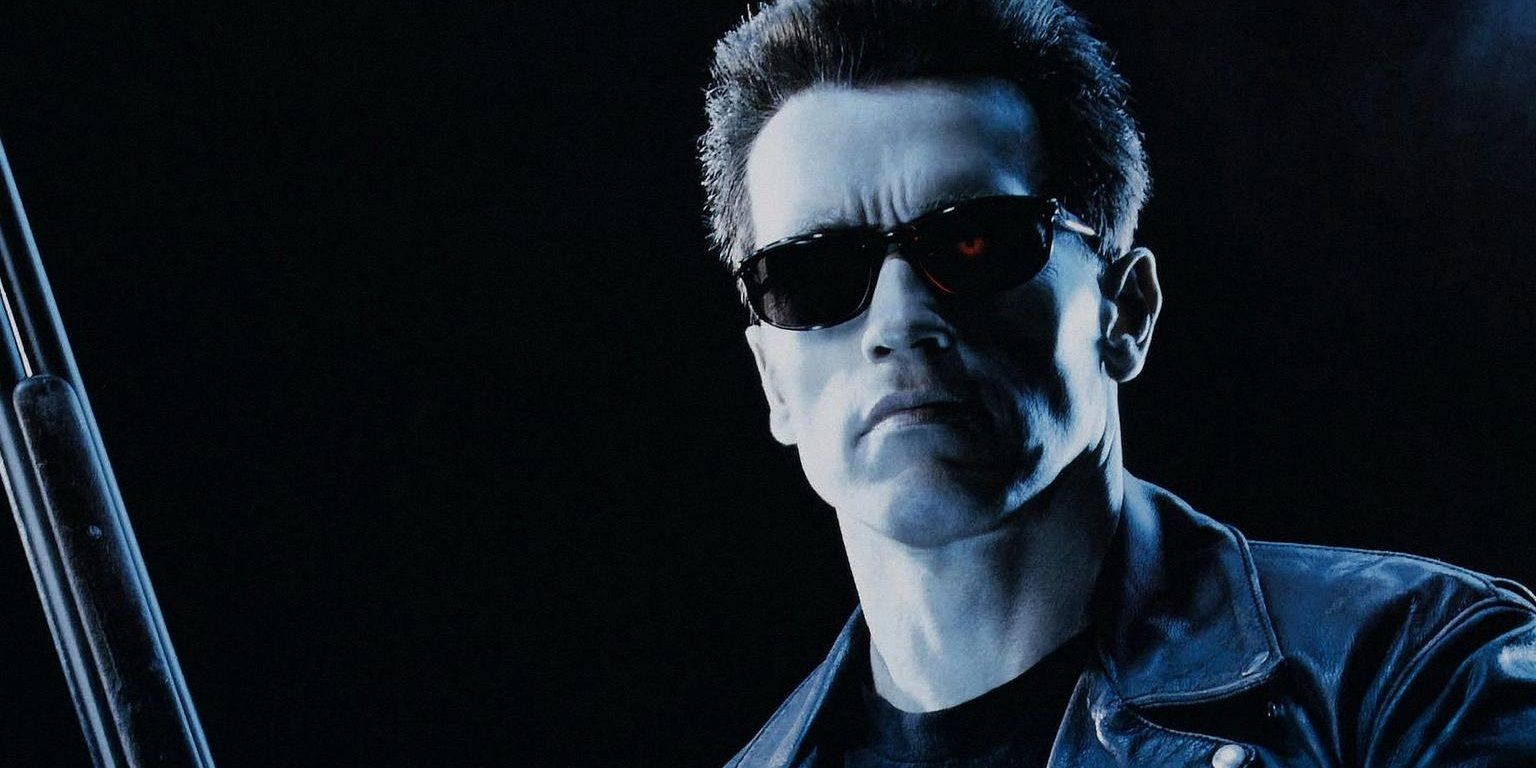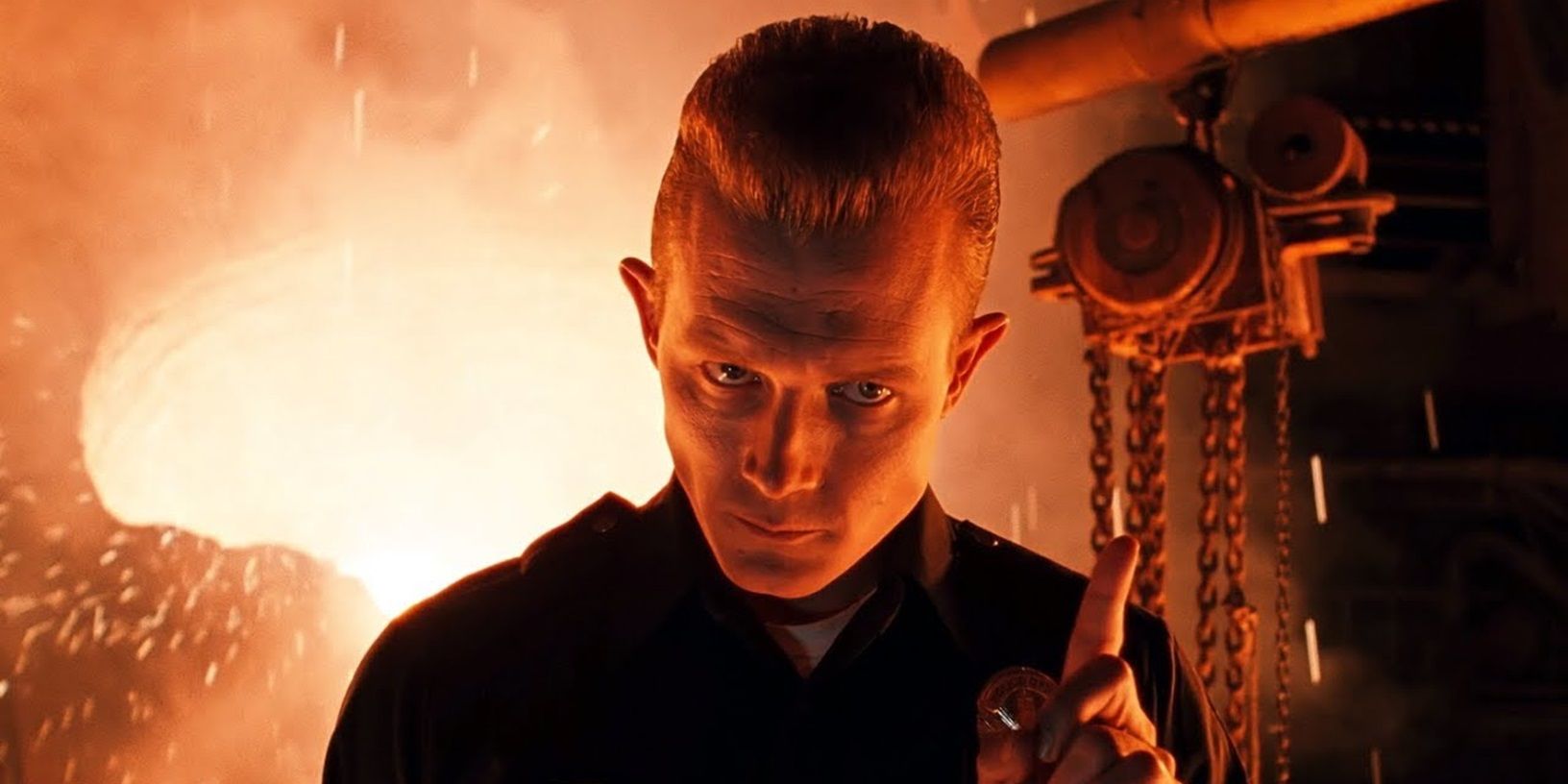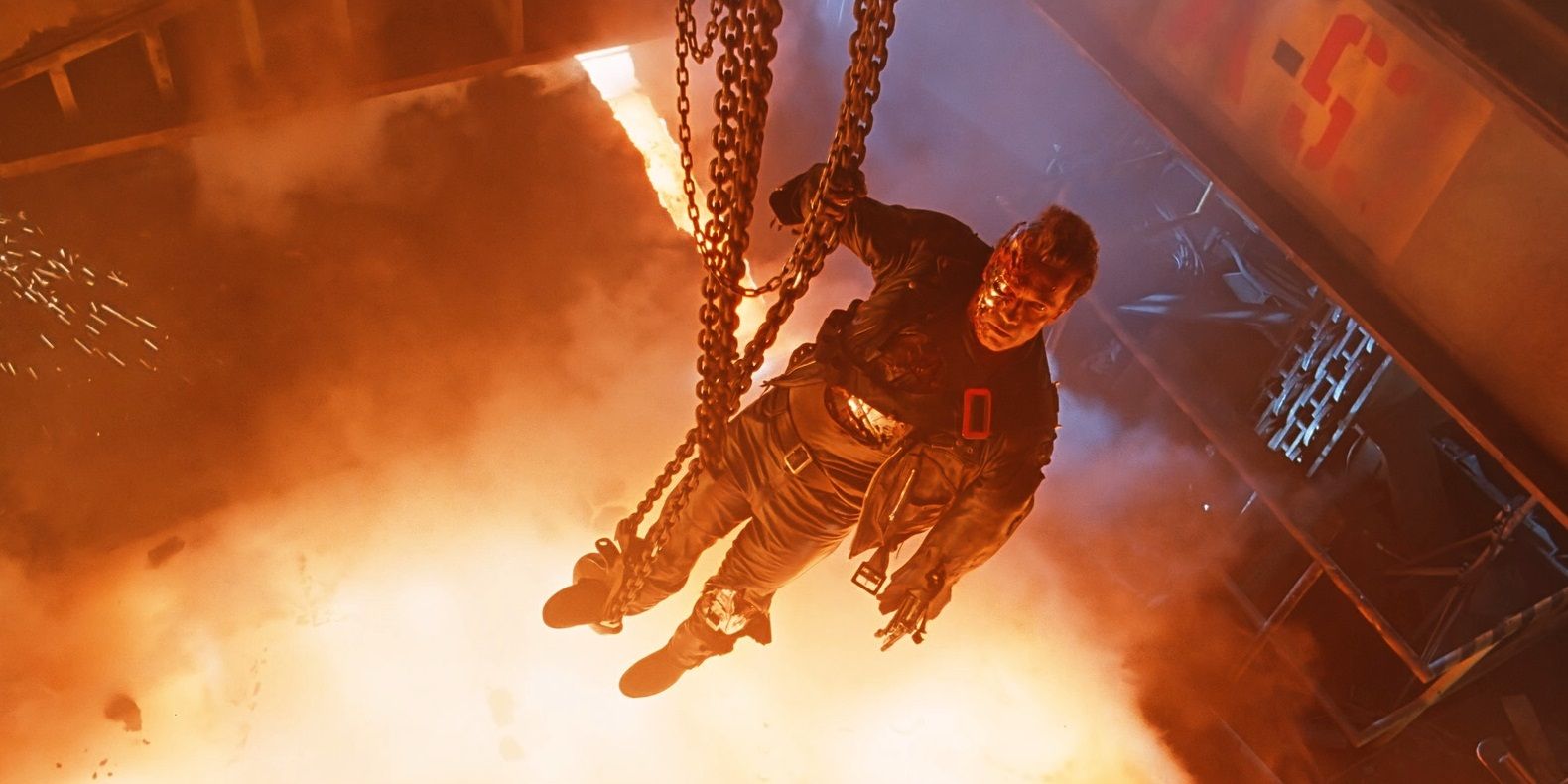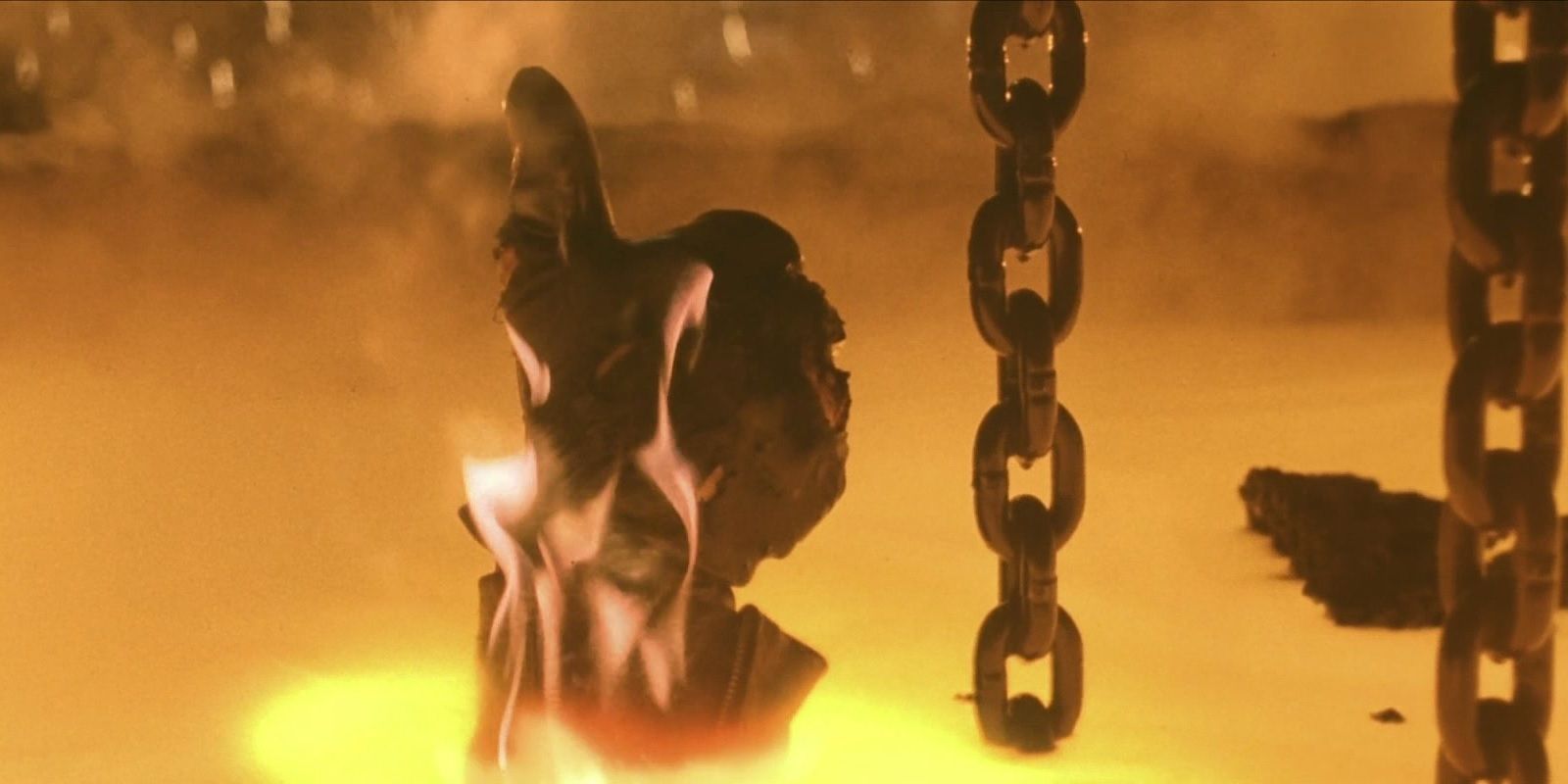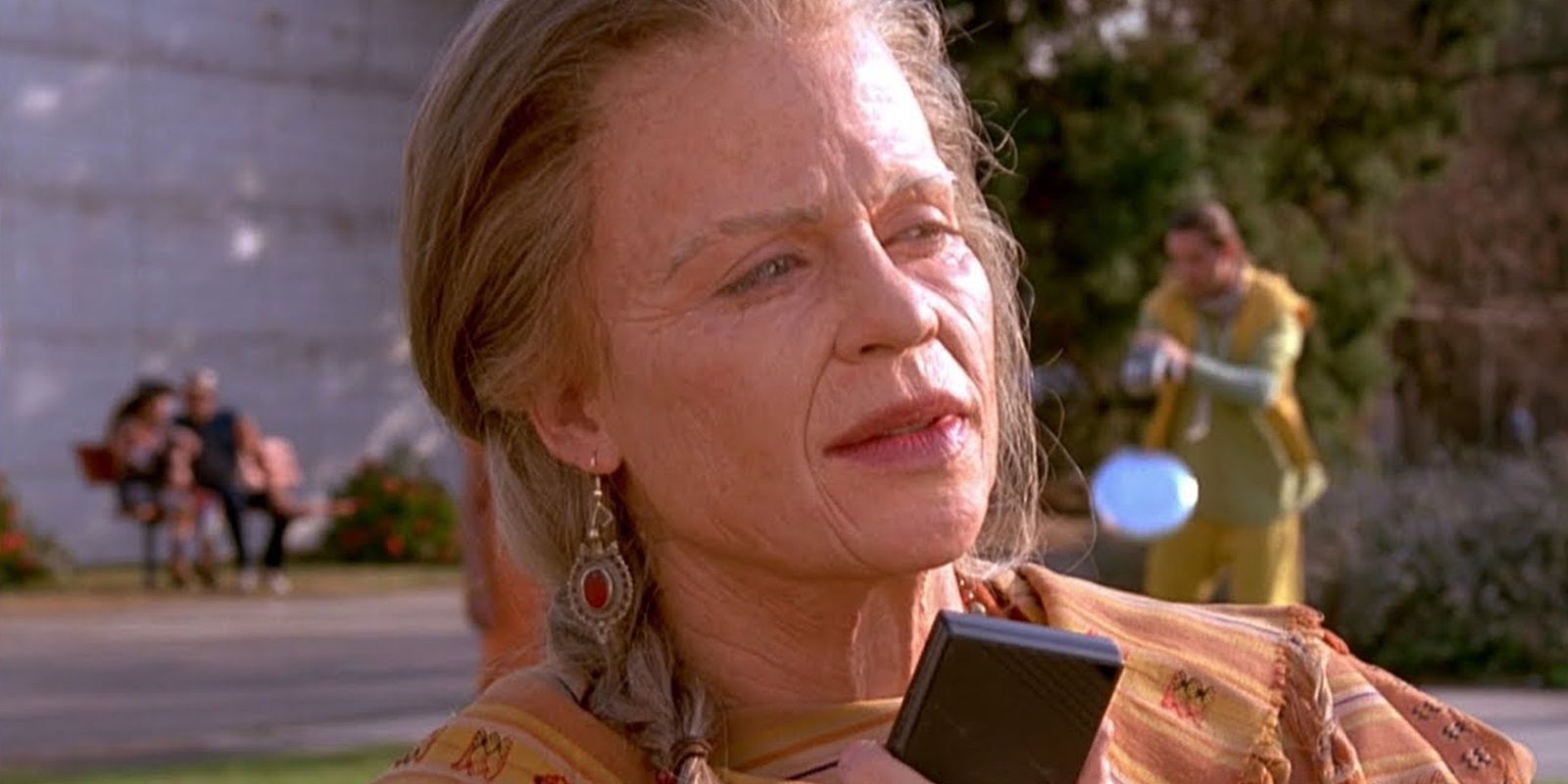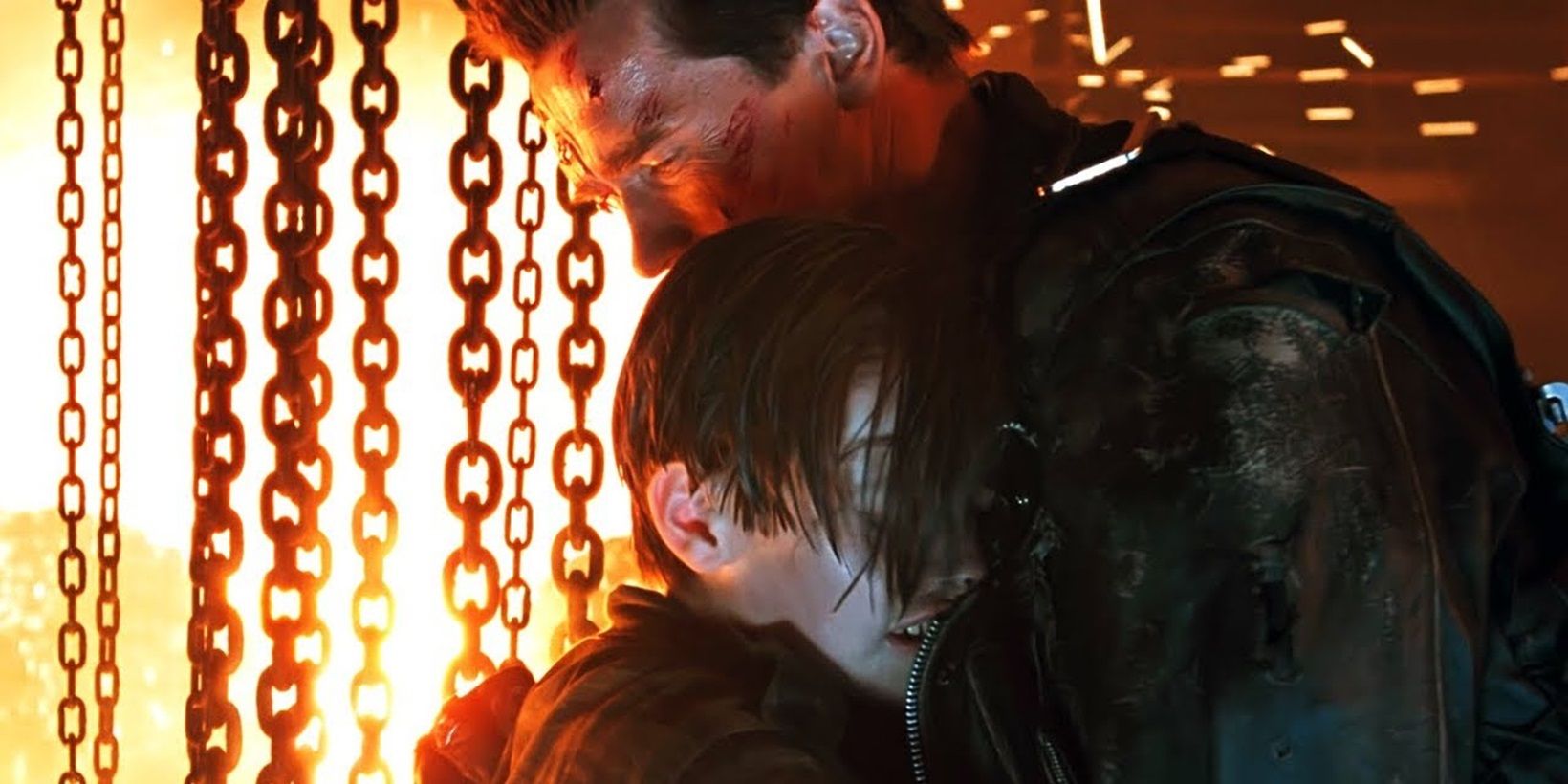Not only does the action-packed ending of Terminator 2: Judgment Day kill off its cybernetic villain in explosive fashion, but it also perfectly resolves the themes and existential questions raised by the story. James Cameron’s super-sized sequel to The Terminator flips the original's formula on its head. This time around, a reprogrammed T-800 is sent back in time to protect Sarah Connor and her son, John, when Skynet sends an even more advanced cyborg, the T-1000, to kill them. The Connors’ conflict with the T-1000 – and their broader quest to eradicate Skynet for good – comes to a head in the movie's spectacular finale.
Terminator 2: Judgment Day is renowned as one of the best movie sequels ever made. A classic example of going bigger and bolder than the original, the first Terminator sequel was, at the time of its release, the most expensive movie ever made (via Newsweek). From the shopping mall shootout to the truck chase down the Los Angeles River to the destruction of Cyberdyne’s headquarters, the movie is full of mind-blowing set-pieces. The climactic sequence, set at a steel mill, manages to top all the spectacle that comes before it. This scene ends Terminator 2: Judgment Day on an exhilarating note, but it also leaves a few unanswered questions lingering.
How The T-1000 Is Killed
Throughout Terminator 2: Judgment Day, the more advanced T-1000 (Robert Patrick) seems indestructible. Sarah Connor (Linda Hamilton) destroyed the T-800 that tormented her in the first movie by crushing it in a hydraulic press. That wouldn’t work this time, because of one detail about the T-1000: it's made of liquid metal. When the T-1000 shuts down the T-800 (Arnold Schwarzenegger) sent to protect them, the Connors lose hope. Luckily, the T-800 is able to reactivate itself with a backup power supply and arrives in the nick of time. The T-800 shoots the T-1000 with a grenade launcher, and it falls into a vat of molten steel, where it's disintegrated.
Why Did The T-800 Have To Die?
After sending the T-1000 into a vat of molten steel at the end of Terminator 2: Judgment Day, the T-800 makes the difficult decision to follow it into the vat. Since he has come to love the T-800 as an unconventional father figure, John Connor (Edward Furlong) begs him not to go. In spite of their connection, the heroic T-800 knows he has no choice. As long as he's around, there's a greater chance of the machines rising up and conquering humanity. The T-800 sacrifices itself so that there will be no trace of Skynet technology left in the past for scientists like Miles Dyson (Joe Morton) to reverse-engineer.
Terminator 2: Judgment Day continues to explore the “grandfather paradox” of time travel scenarios. After the first movie identified a time-traveling Kyle Reese as John Connor’s biological father, the second movie revealed that the Terminators were created by studying the remnants of the T-800 that Sarah destroyed. If Reese never went back in time, John wouldn’t exist, and if the T-800 was smelted instead of being left in pieces in a hydraulic press, Skynet creator Miles Dyson and his Cyberdyne team would’ve had nothing to work from. To prevent paradoxical history from repeating itself, the T-800 had to make the ultimate sacrifice.
Did The Connors Really Prevent Judgment Day?
At the end of Terminator 2: Judgment Day, with the destruction of the T-1000, the T-800, and the headquarters of Cyberdyne Systems, it seems as though Sarah has finally succeeded in preventing Judgment Day and the rise of Skynet. But the franchise doesn't end there. Over the years, there have been two different sequels to Terminator 2, each with its own take on what happens after Sarah and John supposedly prevent Judgment Day. First came the direct sequel, Terminator 3: Rise of the Machines. Then, years later, the sixth installment, Terminator: Dark Fate, retconned everything post-T2 with a new version of the story.
The ending of Terminator 3: Rise of the Machines reveals that, despite the Connors’ best efforts, Judgment Day is actually inevitable. The original threequel concludes with Skynet becoming self-aware and disappearing into cyberspace — which renders it impossible to shut down — before it devastates the Earth with nuclear bombs. In retconning all the other sequels, Terminator: Dark Fate reveals that the Connors did, in fact, prevent the rise of Skynet in Terminator 2: Judgment Day. But that victory doesn't really matter because another killer cyborg network just rises up in its place. Skynet is replaced by Legion; Terminators are replaced by Rev-9s. Both sequels undo Terminator 2's satisfying closure.
What Happens To Sarah & John Connor After Terminator 2?
As there are two different direct sequels to Terminator 2: Judgment Day, there are two different versions of the fate that Sarah and John meet after the events of that movie. Terminator 3: Rise of the Machines catches up with John (Nick Stahl) living off the grid as a drifter. The prophesied 1997 date for the war between humans and machines has come and gone, but John is still paranoid that it could happen — and later has that paranoia validated. Sarah lost a battle with leukemia and died off-screen, leaving behind a coffin full of guns in case John ever needed to go on another adventure with a Terminator.
Terminator: Dark Fate tells a very different story for Sarah and John post-Terminator 2: Judgement Day. The movie opens three years later with a digitally de-aged Sarah and John hiding out in Guatemala. Another T-800 arrives and kills John, making the events of Terminator 2 entirely pointless within its opening scene. Terminator: Dark Fate then cuts forward to 2020, where Sarah is even more of a hardened badass than before, armed with military-grade weapons and keeping an eye out for time-traveling cyborgs. She reluctantly teams up with the T-800 that killed John – who became self-aware, named himself “Carl,” and adopted a family – to take down Legion.
What Happens In Terminator 2's Alternate Ending
An alternate ending to Terminator 2: Judgment Day takes place in the future. August 29, 1997, came and went, Judgment Day didn’t happen, and humanity prospered. In this ending, which made it into James Cameron’s director’s cut, an elderly Sarah Connor visits the playground from her visions with her son and granddaughter. If the theatrical cut had ended with this scene, it wouldn’t have left room for further sequels, and the Terminator saga would’ve ended with the closure and emotional catharsis of Terminator 2. But, given that it takes place in the same playground as Sarah’s nightmares, it could’ve been shrugged off as an optimistic dream sequence.
The Real Meaning Of Terminator 2’s Ending
Ultimately, the message of Terminator 2: Judgment Day is that the future isn’t written. Just because a killer robot has traveled back in time from a post-apocalyptic future, that doesn’t mean the killer robots have to be created or a nuclear war has to happen. There’s no such thing as predetermined fate; the future is what people make of it. The future that the Terminators have come from is just one possibility for how the future could play out. It’s never too late to change the outcome – it all depends on what happens in the present. If humanity can change, it doesn’t have to cause its own downfall.
Terminator 2: Judgment Day ends its story in the present. There are no more flash-forwards that confirm that the Connors have defeated Skynet for good, so there is a note of ambiguity suggesting that a grim fate could still await the human race. But Sarah has faith that humanity can save itself from annihilation and stop playing God. Sarah’s final voiceover narration in Terminator 2: Judgement Day perfectly sums up the themes of the story: “The unknown future rolls toward us. I face it, for the first time, with a sense of hope. Because if a machine – a Terminator – can learn the value of human life... maybe we can, too.”

